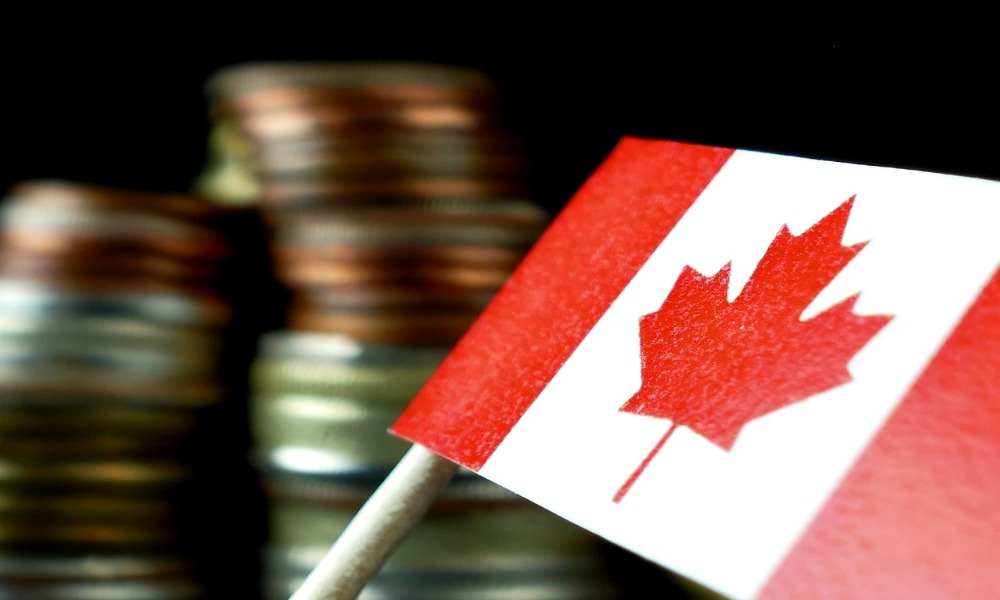Head of Economic and Market Strategy explains why Canada is ahead of the US on recessionary path, highlights prospects for dividend payers

Jeffrey Schulze believes that the Canadian economy is headed to—or could already be in—a recession. The Director and Head of Economic and Market Strategy at Clearbridge Investments, part of Franklin Templeton, explained that Canada’s interest rate sensitivity, relatively lower levels of stimulus, and consumer debt levels are contributing to an economic slowdown and recession.
Central bank rate increases over the past 18 months are the key drivers behind Schulze’s outlook. Canadians, he explained, are particularly sensitive to those increases. Household debt to GDP in Canada is around 107%, Canadian mortgage terms don’t extend beyond 5-years, and consumer confidence is already dropping.
Schulze believes the US economy will likely follow Canada into a recession, driven by its own cycle of rising interest rates. That could further exacerbate problems in Canada, namely around exports to our biggest market.
“I do see Canada falling into a recession, and the US economy following in 2024,” Schulze says. “But a key here is that I don’t see a deep recession for Canada. I think it’s going to be relatively mild and last less than a year.”
One of the key variables within that outlook is what the Bank of Canada might do. Inflation remains elevated—due in part to higher debt costs and oil prices—but Schulze believes the key indicator for the BoC will be the labour market. If the labour market loosens further, we may see a rate cut sometime next year. However, if oil prices remain elevated, that could impact the possibility of easing from the central bank.
Equity opportunities in a recession
In a recessionary environment, Schulze sees some of the best opportunity in dividend paying stocks. He thinks those companies can benefit from cyclicality and resilience in the Canadian economy as his predicted recession comes to its end. Uncertainty is persisting in equities, but high dividend yields can help protect the total return picture for clients. Moreover, many of the largest dividend payers tend to have better visibility into earnings, which should help mitigate short-term volatility.
Canadian dividend payers are particularly attractive in Schulze’s eyes, because their valuations are quite low. The TSX 60 is currently trading at multiples lower than the S&P 500, but has this year provided dividend returns of around 4%—more than double the dividend rate of the S&P 500. Schulze accepts the premise that Canadian dividends are currently on sale.
Beyond dividend payers, Schulze cautions against FOMO from the returns we saw in ‘the magnificent seven’ tech stocks earlier this year. Meta, Apple, Amazon, Alphabet, Microsoft, Nvidia, and Tesla have contributed much of the aggregate growth we’ve seen so far in 2023, but their recent pullback and the shifting consensus to a ‘higher for longer’ interest rate environment has Schulze looking elsewhere.
From a long-term standpoint, Schulze sees promise in energy stocks. Demand from China shows signs of slowing, and the US and Canada are in a recessionary cycle now, meaning oil stocks may be at attractive valuations. When that cycle turns to growth, Schulze thinks that supply cuts from OPEC and Russia, plus low inventories globally, could result in significant returns for energy investors.
“We’d be buying the dip on any weakness you see in energy stocks at this point,” Schulze says.
Looking where the puck is going: the US economy
To inform his outlook for Canada, the US, and global equity markets Schulze is paying close attention to US economic data. He notes that Canadian economic fortunes can rise and fall with our southern neighbours. He’s watching the leading economic indicators by the conference board, which have been down for 17-consecutive months, the third longest consecutive period in history behind the 1973 recession and the great financial crisis. He sees those indicators as a very likely sign of a US recession.
US consumers, despite unexpected resilience, do seem to be showing signs of fatigue. Delinquency rates have risen for credit card debt, auto loans, and other forms for credit. Typically those indices also point to a recession. The US labour market has been unexpectedly strong this year, but if it starts to cool then we could see even more strain placed on US consumers.
Given these indices, Schulze believes advisors should be preparing their clients for a period of economic stress and dire news. At the same time, they should be ready to capture opportunities on the other side of this cycle.
“Longer-term, this recession will be a benefit to the US and Canadian economies, setting them on a better growth trajectory for the next five years,” Schulze says. “This is a necessary evil, and it will come with a period of heightened volatility. However, we don’t see a lot of excesses in the US economy or the Canadian economy, which means this recession should be relatively shallow. If we see more troughs in equity markets we would be advocating for buying the dip with an eye to long-term appreciation.”



